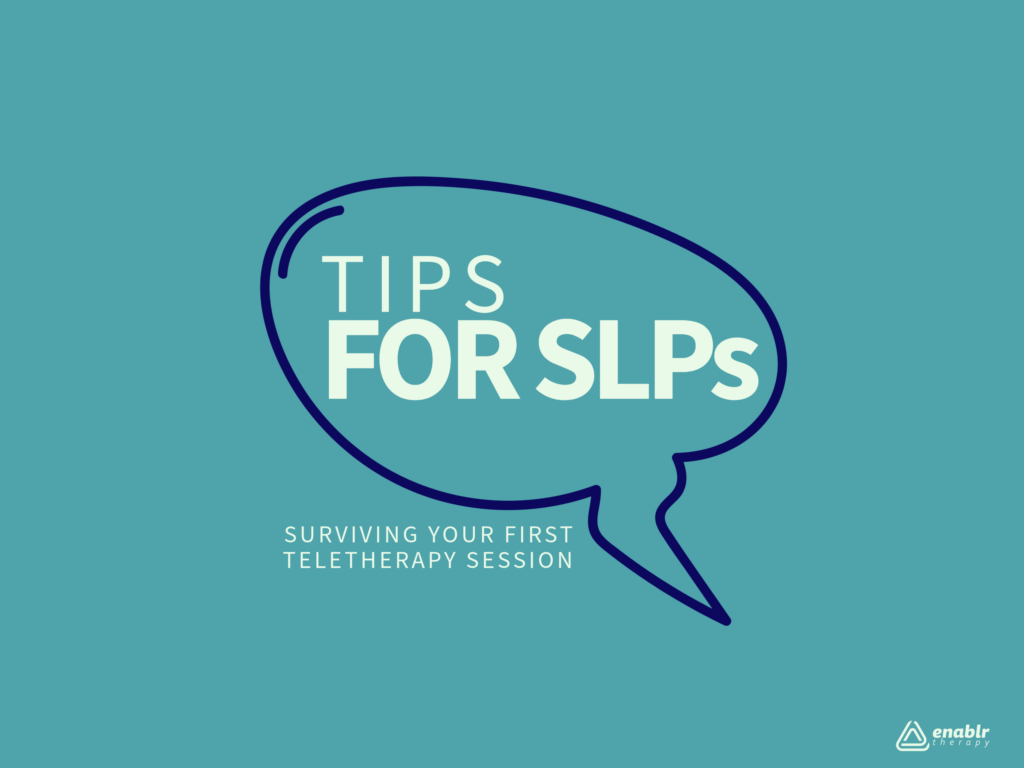Virtual speech therapy is not a new practice – it’s actually been around since the early 21st century, with experiments in virtual speech therapy occurring in the 1990’s! In the past several years, especially since the COVID pandemic, virtual speech therapy has become a standard and widely accepted mode of service delivery (and we have some tips for SLPs and other therapists)!
More people are turning to online speech teletherapy services, especially those who aren’t in areas where a Speech-Language Pathologist (SLP) is readily available or those who want the convenience of online sessions. Many SLPs now provide teletherapy as an option for children and adult patients in private clinics and hospitals. Schools are also using teletherapy in increasing numbers. The American Speech-Language Hearing Association (ASHA) has acknowledged teletherapy as a therapy delivery model since 2005 and provides resources and guidance to SLPs in the field.
But if you’re brand new to this model, it might feel a little scary and hopefully, a little exciting. What should you expect? How should you prepare?
First, remember that this is a valid and successful mode of service delivery and you, as the SLP, can provide excellent care. However, there are a few things that you need to do to make your speech teletherapy sessions the most successful.
Tips For SLPs
1. Be prepared! Make sure that you have a private, quiet, well-lit area to work in, free from distractions and interruptions. Download the HIPAA-compliant virtual platform (Zoom, Microsoft Teams, etc.) that you will be using ahead of time and make sure you are familiar with it so that you don’t have to worry about navigating it during your session. Perform technology checks beforehand, so that any problem can be fixed before your session. Ensure that your client has the login information and knows how to access your video platform as well. Give yourself a few minutes before the session starts to log in and get settled.
2. Be flexible! Be prepared to go with the flow. Sometimes sessions run exactly how we would like them to, but at other times, we might find ourselves having to change plans on a dime. Be mindful of things that could affect your sessions and always have a backup plan and activities in case you need it.
3. Be engaged! Actively participate in your session, interacting with your client. Be sure to give them time to ask any questions they might have, discuss any concerns, and set their goals so that they are invested and know what to expect from therapy. Communication is key- if you have good communication with your client, therapy will progress much more smoothly. Ask for your client’s preferred contact method and be sure to share yours.
4. Practice, practice, practice! Give your client “homework” and ask them to practice their skills outside of therapy. Consistency is key! Generalization of skills comes more quickly with consistent practice. Involve the student’s caregiver in your sessions so that they can better understand the treatment plan and interventions. Parent coaching is an excellent way to help equip parents to work on their child’s skills.
5. Stay Positive! Results aren’t immediate, but will come in time. Continue to monitor progress and make adjustments to treatment interventions accordingly. Celebrate small victories and keep a positive outlook. Everything is easier and more enjoyable when we stay positive!
Take a look at Enablr’s teletherapy demo video to learn more about what a speech teletherapy session might look like.
Enablr Therapy believes that partnership with families and school partners is essential to successful therapy outcomes. Contact us for more information.
References:
[1] American Speech-Language Hearing Association https://www.asha.org/practice-portal/professional-issues/telepractice/
[2] Wales D, Skinner L, Hayman M. The Efficacy of Telehealth-Delivered Speech and Language Intervention for Primary School-Age Children: A Systematic Review. Int J Telerehabil. 2017 Jun 29;9(1):55-70. doi: 10.5195/ijt.2017.6219. PMID: 28814995; PMCID: PMC5546562. https://www.ncbi.nlm.nih.gov/pmc/articles/PMC5546562/


